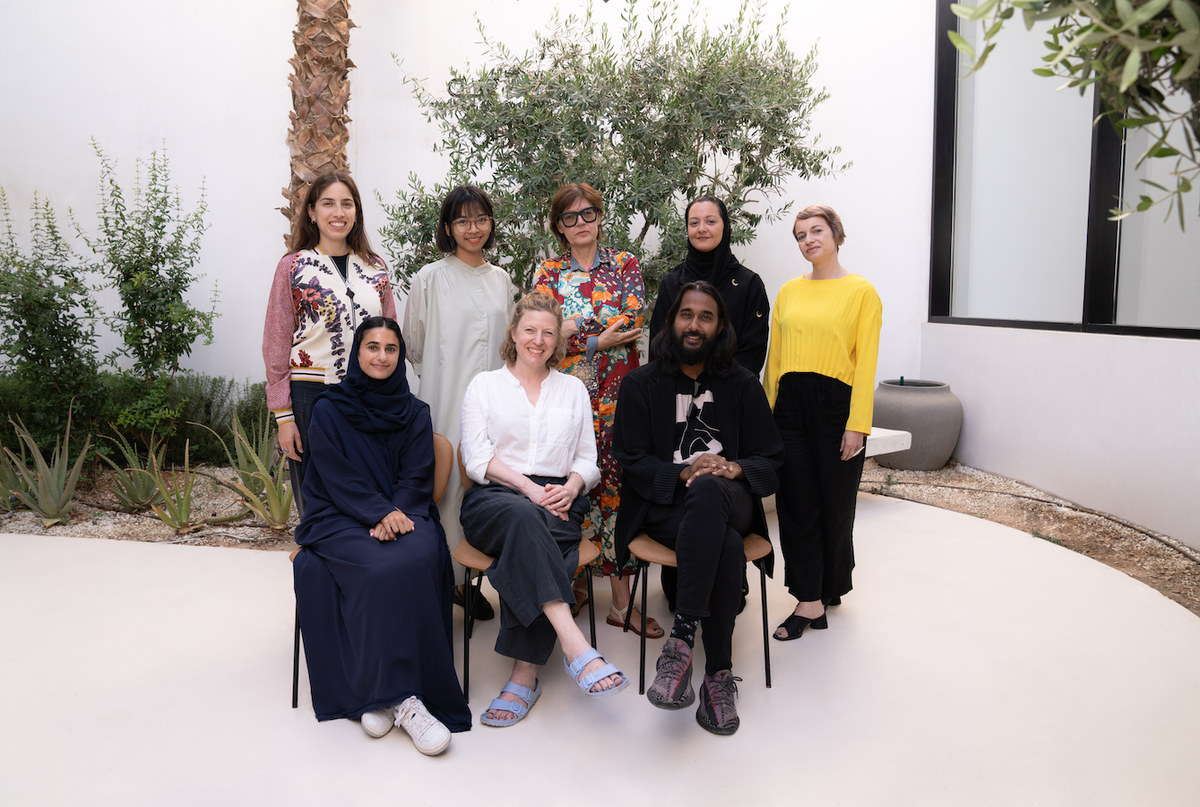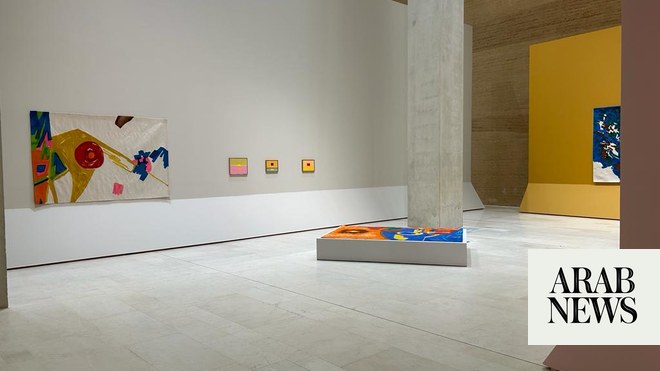DUBAI: Saudi Arabia’s flourishing cultural scene gains further impetus this month with the return of the Diriyah Contemporary Art Biennale. Taking place in the Saudi capital of Riyadh from Feb. 20 to May 24, this is the second edition of the contemporary art event after its inaugural showing in December 2021.
Titled “After Rain,” the biennale will feature the work of 92 artists from 43 countries, of whom 30 are from the Gulf region. Such a vibrant mix of artists from around the world supports the biennale’s mission to provide a platform for contemporary art to foster dialogue between Saudi Arabia and other parts of the world.
The 2024 biennale centers around ideas relating to the natural environment and the impact it has on human life. If one is living in an oasis in the desert, for example, when it rains it has an immediate effect on the surroundings. Drops of rain nourish the earth and revitalize it. So the title “After the Rain,” explains the biennale’s German-born lead curator and artistic director Ute Meta Bauer, is about renewal and hope — reflective of the energy and change of today’s Saudi Arabia.

“The second edition of the Diriyah Contemporary Art Biennale,” Bauer tells Arab News, “examines the role that contemporary art can foster in a society that is (in) a period of rapid change.”
The event will take place across seven halls and numerous terraces and courtyards in a series of repurposed former warehouses located in the JAX District of Diriyah, situated along Wadi Hanifa.
Led by Bauer, the curatorial team includes Wejdan Reda of the Diriyah Biennale Foundation; Rahul Gudipudi, who will act as adjunct curator alongside co-curators Rose Lejeune and Anca Rujoiu; Ana Salazar; Amina Diab; Dian Arumningtyas; and Alanood AlSudairi.
“The artists’ experiences stood central in the preparation of ‘After Rain,’” Reda says. “We organized various trips to different parts of Riyadh and the Kingdom to engage with professionals across various disciplines to explore various offerings around the country.”
Those excursions included visits to Dammam, Khobar, Al-hasaa, Riyadh, Jeddah, Khamis Mushait, Abha, and Rijaal Almaa, and centered around fostering conversations and enhancing collaboration between Saudi artists of various generations to further learn about the country’s rich and diverse cultural scene.

“It is our deeply held belief and ambition as a foundation to deliver world-class international platforms that highlight the transformative power of
the arts in Saudi Arabian society,” Aya Al-Bakree, the CEO of the Diriyah Biennale Foundation said in a statement. “‘After Rain’ opens a new chapter for the Diriyah Biennale Foundation, where a diverse and multi-generational group of artists come together. We hope to ignite conversations, broaden perspectives, and, above all, engage wider audiences than ever before with the arts.”
Participating Saudi artists include Abdulrahman Al-Soliman, Asma Bahmim, Mohammad Al-Faraj, and Ahmed Mater. The featured works cover a range of media and diverse artistic practices exploring a range of subjects, including historical, archaeological, and environmental issues, among many others.
“Our aim is to engage deeply with the location and the conversations taking place here, while simultaneously fostering new connections within the Middle East region and beyond,” said Bauer.
Many of the works will reflect on — and engage with — the unprecedented period of transformation currently taking place in Saudi Arabia.
Among the newly commissioned works will be a collaborative project between Mater, one of Saudi Arabia’s most important artists, and Berlin-based photographer and filmmaker Armin Linke. The two artists have embarked on a long-term partnership that will see them jointly documenting Saudi futurism since the 1940s. Both artists conducted research into the archives of Saudi Aramco, the Kingdom’s petroleum and natural gas company, located in Dhahran in the eastern province.

On a more spiritual note, the Jeddah-based Yemeni artist Sara Abdu will create a series of towers made from hand-crafted bars of soap to explore the region’s cleansing rituals.
As this year’s biennale will be running throughout Ramadan, many of the works focus on the communal values of the holy month, such as the sharing of food, for example. Britto Arts Trust will invites the audience to harvest, cook, and eat in a bamboo architectural structure, while NJOKOBOK, a collaboration between artists Youssou Diop and Apolonija Sustersic, will operate a juice and tea bar serving locally produced hibiscus and ginger juice, alongside Senegalese mint tea.
Additionally, Lucy and Jorge Orta will invite the public to participate in a meal in the streets of the JAX District, connecting the structure in which the Biennale is housed with artist studios and other artistic platforms within the district.
Another interactive highlight will be large-scale artworks that incorporate contemporary art references with traditional Saudi art forms. These will be stationed outdoors around the JAX district. One example is a work by Bosnian-born Azra Aksamija in the form of a 70-meter-long canopy of recycled felt, inspired by Saudi textiles and incorporating traditional Sadu weaving techniques.
Dutch architect Anne Holtrop, meanwhile, will build a structure from recycled glass sheets produced by Saudi manufacturers.
Beyond the themes of renewal, hope and the natural environment, a great emphasis has been placed on knowledge, discovery and cross-cultural dialogue.
“The biennale is a meeting ground for young voices and established figures,” emphasizes Bauer. “It feeds off and nurtures the cultural ecosystem in which it is embedded.”
Innovation, both artistic and intellectual, with a focus on history, creativity and nature is, then, the mission of “After Rain” — for rainfall promises a period of fertility, regeneration and hope.

